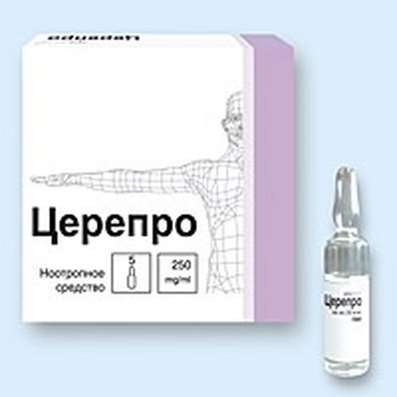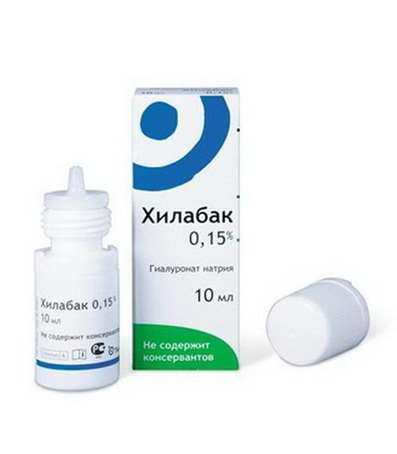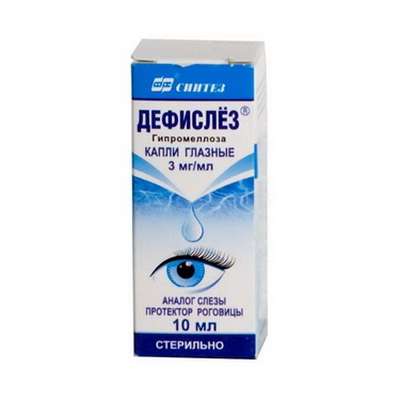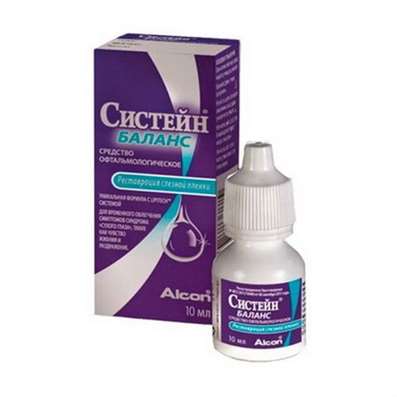Instruction for use: Refortan GAK 6%
I want this, give me price
Dosage form: Solution for infusions
Active substance: Amylum hydroxyaethylicum
ATX
B05AA07 Hydroxyethyl starch
Pharmacological group
Substitutes for plasma and other blood components
The nosological classification (ICD-10)
A48.3 Toxic shock syndrome: Bacteremic shock; Infectious-toxic shock; Intoxication syndrome; Toxico-infectious shock; Toxic shock; Chronic intoxication in diseases of the digestive tract; Chronic intoxication in gastrointestinal infections; Endotoxin shock
B99.9 Other and unspecified infectious diseases
E86 Decreased fluid volume [hypovolaemia]: Water deficit recovery; Indemnification of isotonic deficiency of water; Compensation for isotonic sodium deficiency; Compensation BCC; Replenishment of water deficit with stored KShS; Replenishment of fluid volume; Replenishment of BCC; Replenishment of electrolytes with stored KHS; Hypovolemic conditions; Hypovolemic condition; Hypovolemia; Hypotonic form of hypohydration; Hypochloremia with dehydration; Dehydration of different origin; Dehydration in children; Substitution of plasma volume for blood loss in pediatrics; Substitution of plasma with its losses and burns; Isotonic dehydration; Isotonic form of hypohydration; Violation of the water-salt balance; Dehydration;Dehydration in acute intestinal infections; Acute hypovolemia; Loss of fluid in burns; Toxicosis with exsycosis
R57.1 Hypovolemic shock: Hypovolemic shock during surgery; Acute hypovolemia
R57.8.0 * Burn shock: Pain shock for burns; Burn shock
R57.9 Shock, unspecified: Pain shock; Hemolytic shock; Neurogenic shock; Shock; Shock condition; Shock states
R58 Bleeding, not elsewhere classified: Abdominal apoplexy; Hemorrhagia; Haemorrhage of the esophagus; Hemorrhage; Generalized bleeding; Diffuse bleeding; Diffuse bleeding; Prolonged bleeding; Blood loss; Blood loss during surgical interventions; Bleeding during surgery and in the postoperative period; Bleeding during labor; Bleeding and haemorrhage in hemophilia B; Bleeding from the gums; Bleeding intraoperative abdominal; Bleeding against a background of coumarin anticoagulants; Hepatic hepatitis; Bleeding in hemophilia A; Bleeding at hemophilia A; Bleeding with inhibitory forms of hemophilia A and B; Bleeding due to leukemia; Bleeding in patients with leukemia; Bleeding; Bleeding due to portal hypertension; Bleeding due to hyperfibrinolysis; Drug bleeding; Local bleeding; Local bleeding due to activation of fibrinolysis; Massive blood loss; Acute blood loss; Parenchymal hemorrhage; Hepatic bleeding; Postoperative hemorrhage; Kidney bleeding; Vascular-platelet hemostasis; Traumatic bleeding; Threatening bleeding; Chronic blood loss
T14 Injury to unspecified site: Pain syndrome with trauma and after surgery; Injuries; Extensive trauma to the skin and soft tissues; Muscle and ligament injuries; Injuries; Fibroma traumatic; Acute sport injuries
T30 Thermal and chemical burns of unspecified site: Pain syndrome with burns; Pain in burns; Pain with burns; Sluggishly healing post-burn wounds; Deep burns with a wet scab; Deep burns with abundant compartments; Deep burn; Laser burn; Burn; Burn of rectum and perineum; Burn with mild exudation; Burn disease; Burn injury; Superficial burn; Superficial burn of I and II degree; Superficial skin burns; After-burn trophic ulcer and wound; Post-burn complication; Loss of fluid in burns; Sepsis burn; Thermal burns; Thermal skin lesions; Thermal burn; Trophic after-burn ulcers; Chemical burn; Surgical burn
T79.4 Traumatic shock: Haemorrhagic shock; Crash Syndrome; Posthemorrhagic shock; Postoperative shock; Post-traumatic shock; Post-traumatic shock; Traumatic shock; Syndrome of hemorrhagic shock and encephalopathy
T81.1 Shock during or after the procedure, not elsewhere classified: Operating shock; Postoperative shock; Operational shock
Z100 * CLASS XXII Surgical practice: Abdominal surgery; adenomectomy; Amputation; Coronary angioplasty; Angioplasty of the carotid arteries; Antiseptic skin treatment for wounds; Antiseptic Hand; Appendectomy; atherectomy; Balloon coronary angioplasty; Vaginal hysterectomy; The coronary bypass; Interventions in the vagina and cervix; Interventions on the bladder; Intervention in the mouth; Restoration and reconstructive surgery; Hand hygiene of medical personnel; Gynecologic surgery; Gynecological intervention; Gynecological surgery; Hypovolemic shock during operations; Disinfection of purulent wounds; Disinfection of wounds edges; Diagnostic intervention; Diagnostic procedures; Cervical Diathermocoagulation; Long-surgery; Replacing the fistula catheters; Infection in orthopedic surgery; Artificial heart valve; cystectomy; Short-term outpatient surgery; Short-term operation; Short surgical procedures; Krikotireotomiya; Blood loss during surgery; Bleeding during surgery and in the postoperative period; Kuldotsentez; laser photocoagulation; laser coagulation; retinal laser coagulation; Laparoscopy; Laparoscopy in Gynecology; CSF fistula; Small gynecological operations; Small surgical procedures; Mastectomy and subsequent plastic; mediastinotomy; Microsurgical operations on the ear; Mukogingivalnye operation; suturing; Minor surgery; neurosurgical operation; Immobilization of the eyeball in ophthalmic surgery; testectomy; pancreatectomy; Perikardektomiya; The period of rehabilitation after surgery; The period of convalescence after surgery; Percutaneous transluminal coronary angioplasty; Pleural thoracentesis; Pneumonia postoperative and posttraumatic; Preparation for surgical procedures; Preparation for surgery; Preparation of the surgeon's hands before surgery; Preparation of the colon for surgical procedures; Postoperative aspiration pneumonia in neurosurgical and thoracic surgery; Postoperative nausea; Postoperative bleeding; postoperative granuloma; postoperative shock; The early postoperative period; myocardial revascularization; Radiectomy; gastric Resection; bowel resection; uterine Resection; liver Resection; enterectomy; Resection of part of the stomach; Reocclusion of the operated vessel; Bonding tissues during surgical procedures; Removal of sutures; Condition after eye surgery; Condition after surgery; Condition after surgery in the nasal cavity; Condition after gastrectomy; Status after resection of the small intestine; Condition after tonsillectomy; Condition after removal of the duodenum; Condition after phlebectomy; Vascular surgery; Splenectomy; Sterilization of surgical instruments; Sterilization of surgical instruments; sternotomy; Dental surgery; Dental intervention in periodontal tissues; strumectomy; Tonsillectomy; Thoracic surgery; Thoracic surgery; total gastrectomy; Transdermal intravascular coronary angioplasty; Transurethral resection; Turbinektomiya; Removal of a tooth; cataract surgery; Removal of cysts; tonsillectomy; Removal of fibroids; Removing the mobile primary teeth; Removing polyps; Removing broken tooth; Removal of the uterus body; Removal of sutures; Fistula likvoroprovodyaschih ways; Frontoetmoidogaymorotomiya; Surgical infection; Surgical treatment of chronic limb ulcers; Surgery; The surgery in the anal area; The surgery on the colon; Surgical practice; The surgical procedure; Surgical interventions; Surgery on the gastrointestinal tract; Surgical procedures on the urinary tract; Surgical procedures on the urinary system; Surgical intervention of the genitourinary system; Surgical procedures on the heart; Surgical manipulation; surgery; Surgery on the veins; Surgical intervention; Vascular surgery; Surgical treatment of thrombosis; Surgery; cholecystectomy; Partial gastric resection; hysterectomy; Percutaneous transluminal coronary angioplasty; Percutaneous transluminal angioplasty; Coronary artery bypass; tooth Extirpation; Extirpation of milk teeth; pulpectomy; pulsative cardiopulmonary bypass; tooth Extraction; teeth Extraction; cataract extraction; Electrocoagulation; endourological intervention; episiotomy; Etmoidotomiya; Complications after tooth extraction
Composition
Solution for infusion - 1 liter
active substance: hydroxyethyl starch (HES 200 / 0.5), 60 g
Excipients: sodium chloride; water for injections
Indicators: theoretical osmolarity - "300 mOsm / l; colloid osmotic pressure -> 38 mbar (or about 28 mm Hg.); pH - from 4 to 7
Description of dosage form
Transparent or slightly opalescent colorless or light yellow solution.
Pharmachologic effect
Mode of action - plazmozameshchath.
Pharmacodynamics
Refortan® GAK 6% - 6% solution of hydroxyethyl derivative isotonic partial hydrolysis of waxy maize starch - hydroxyethyl starch (HES) with an average molecular weight of 200,000 Da and a molar degree of substitution of 0.45-0.55. Due to the ability to bind and retain water volemic drug has an action that is stable at least for 6 hours, and thus increase the BCC is almost equivalent to the entered volume of the preparation.
Physico-chemical parameters of the original substance of the drug provide high efficiency with hypovolemia and shock, as well as when used for therapeutic dilution of blood (hemodilution) due to the normalization of the central and peripheral hemodynamics, microcirculation, improve delivery and oxygen consumption of organs and tissues, normalization of vascular permeability, reduce the local inflammatory response, activation of the full immune response, mobilizing blood cells and saline deposits and involving them in active metabolism against the background of moderate hemodilution.
In addition, the drug improves the rheological properties of the blood due to lower hematocrit and plasma viscosity decreases, decreases platelet aggregation and inhibits the aggregation of erythrocytes.
Pharmacokinetics
Cmax - (11,1 ± 2,7) mg / ml. Depending on the speed of injection and infusion purposes (achievement normo- or hypervolemia), T1 / 2 is about 5-6 hours after administration of the drug excreted by the kidneys (24 hours - 70%). With bile. A small amount is accumulated in the reticuloendothelial system (without exhibiting toxic effects on the liver, lungs, spleen and lymph nodes) where amylase is cleaved.
Indications of the drug Refortan GAK 6%
prevention and treatment of hypovolemia and shock during operations, acute blood loss, trauma, infections and burns;
therapeutic hemodilution.
Contraindications
Hypersensitivity to the starch or other ingredients;
hyperhydration;
hypervolemia;
hypokalemia;
hypernatremia;
hyperchloremia;
heart failure in the stage of decompensation;
renal failure with oliguria or anuria (creatinine> 2 mg / dL, respectively, or 177 uM / L);
cardiogenic pulmonary edema;
intracranial hemorrhage;
expressed bleeding disorders;
hemodialysis;
dehydration.
Precautions: compensated chronic heart, liver and kidney failure; hemorrhagic diathesis; intracranial hypertension.
Pregnancy and breast-feeding
Although it established that Refortan® GAK 6% does not have embryotoxic and teratogenic effects, use of the drug in the I trimester of pregnancy is not desirable. In II and III trimesters of pregnancy Refortan® GAK 6% may be used only for health reasons.
It is not known whether allocated Refortan® GAK 6% in breast milk, therefore caution should be exercised in the appointment of the drug to women during lactation.
Side effects
Due to the effect of hemodilution infusion Refortan®GAK 6% lead, depending on the dose, a decrease in hematocrit and plasma protein concentration of the blood. Also due to this effect may transient increase clotting time and bleeding time, however, the no effect on platelet function, and clinically significant bleeding occurs.
Long-term daily administration Refortan®GAK 6% in the range of medium and high doses can often cause itching, which is difficult to cupping. It may appear a few weeks after the end of treatment and persist for a long time.
The literature describes the relationship between the dose and frequency of itching at otoneurological diseases such as sudden hearing loss, tinnitus. In these diseases to reduce incidence of pruritus recommended limit to a maximum daily dose - 500 ml (corresponding to 30 g of HES / day).
During the infusion preparation Refortan® GAK 6%, as in the case of other colloid plasma expander, can intolerance reactions of all severities. Anaphylactoid reactions may manifest itself as a skin reaction or as a sudden rush of blood to the face and neck (sudden redness); as well as arterial hypotension and shock, up to a cardiac arrest and breathing.
In conditions followed by dehydration (regular) and oliguria reduction of glomerular filtration and tubular reabsorption of a drug infusion Refortan® GAK 6% may lead to anuria as primary urine tubular saturated HES osmotic gradient can occur. Therefore, before administration of Refortan®GAK 6% necessary (to stimulate diuresis) by administering to conduct rehydration solute free water in the form of infusion solutions of glucose or hypotonic salt solutions.
In rare cases, the reported pain in the kidney area. In these cases, you must stop the infusion of the drug, to ensure adequate intake of fluids and exercise frequent monitoring of serum creatinine.
Interaction
When mixed with other drugs in the same container or in one system there may be problems pharmaceutical incompatibility. HES while the use of aminoglycoside antibiotics may potentiate their nephrotoxicity.
Dosing and Administration
IV (in the form of infusions).
In the absence of other provisions of the drug is introduced into / in the drip, in accordance with the need of circulating plasma volume replacement.
Given the possible anaphylactic reactions, the first 10-20 ml of the product Refortan® GAK 6% should be introduced slowly and with careful observation of the patient's condition. It is necessary to take into account the risk of overloading the circulatory system when given too rapidly or too high a dose of the drug.
The daily dose rate and on / in the calculated depending on the blood loss, hemoglobin concentration and hematocrit. In young patients, without the risk of cardiovascular or pulmonary complications limit the application of colloidal drug obemozameschayuschego considered hematocrit less than 30%.
| Age | The average daily intake in ml / kg | Maximum daily dose ml / kg |
| Adults and children over 12 years | 33 | 33 |
| Children 6-12 years | 15–20 | 33 |
| Children 3-6 years | 15–20 | 33 |
| Infants and children up to 3 years | 10–15 | 33 |
The maximum rate of infusion depends on baseline hemodynamics and is about 20 ml / kg / h.
The maximum daily dose of 33 ml / kg / day (HEC 2g / kg / day).
Carrying hemodilution can be carried out under izovolemii (with cupping) or hypovolemia (no bleeding).
The daily dose and rate of in / in the introduction:
- Low dose - once, 250 ml / day for 0.5-2 hours;
- Average dose - once, 500 ml / day for 4-6 hours;
- High dose - twice with 500 ml / day for 8-24 hours.
The duration of treatment depends on the indication and the therapy.
Overdose
Symptoms: hypervolemic syndrome.
Treatment: immediate cessation of drug infusion; possible diuretics.
Special instructions
At the beginning of therapy with Refortan® GAK 6% is necessary to monitor serum creatinine. If the limit values of creatinine indicators (1.2-2 mg / dL, respectively, or 106-177 mmol / l, ie, renal insufficiency in the stage of compensation) must carefully evaluate the indications for appropriate therapy and to carry out frequent monitoring of intracellular and extracellular fluid balance and renal excretory function.
With a lack of fibrinogen preparation may be used only for assistance in cases of emergency, when the patient's life is in danger in the absence of donor blood.
Keep in mind that too rapid on / in the introduction of the drug, as well as its application in high doses can lead to violations of hemodynamics.
In the course of treatment must be ensured adequate fluid intake in the body, to control the electronic structure of blood serum and fluid balance, and kidney function.
In the event of intolerance reactions should be discontinued immediately and administration of the drug to make the necessary urgent measures.
To avoid fluid overload, which may occur as a result of decompensated heart failure in patients with heart disease in history, it is necessary to monitor cardiac activity and therapy. Note that when using the drug Refortan® 6% GAK may increase serum amylase activity of the blood that is not associated with clinical evidence of pancreatitis. Hyperamylasemia due to the formation of the complex of HES-amylase, which is slowly excreted by the kidneys.
Release form
Solution for infusion 6%.
250 or 500 ml of the product in vials:
1) of a colorless transparent glass type II (Evr.F.), closing bromobutyl rubber stopper type I (Heb. F.) for piercing and plastic cover under an aluminum run with a plastic holder, reinforced on the bottle. On 10 fl. placed in a cardboard box (for hospitals);
2) LDPE (Evr.F.) welded on with a cap for bottle, integrated with a rubber gasket and two rings and a holder for opening the bottom of the vial. On 10 fl. placed in a cardboard box (for hospitals).
Manufacturer
Berlin-Chemie AG, Gliniker Weg 125, 12489 Berlin, Germany.
Conditions of supply of pharmacies
On prescription.
Storage conditions of the drug Refortan® GAK 6%
At temperture no higher than 25 ° C. Protect from freezing.
Keep out of the reach of children.
The shelf life of the drug Refortan® GAK 6%
Solution for infusions 6% - 3 years.
Do not use beyond the expiration date printed on the package.

 Cart
Cart





